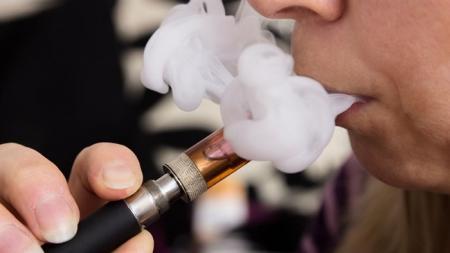
Many adults are still unaware of this danger, although the US Surgeon General said e-cigarette vapor may expose children to nicotine and other harmful chemicals, dailymail.co.uk wrote.
A new CDC study found this concerning because although the devices may be less toxic than traditional cigarette smoke, they still emit harmful substances into the air.
Long-term health effects of the ingredients and flavorings in e-cigarettes are unclear, causing the organization to encourage adults not to smoke around kids.
The CDC polled adults in an online survey in 2015, questioning them if they thought if there was any harm exposing children to secondhand e-cigarette vapor.
These battery-powered gadgets use a heating element that turns liquid nicotine and flavorings into vapor that users inhale, which also releases other chemicals as secondhand smoke.
Overall, just 5.3 percent of adults who participated thought there was 'no harm' to kids.
Another 40 percent of adults thought it caused 'little harm' or 'some harm' to children.
Senior study author Brian King said: 'The bottom line is that kids should not be exposed to the emissions from any type of tobacco product, irrespective of whether that product is smoked, smokeless or electronic'.
King, who is a researcher with the CDC Office on Smoking and Health, added: 'Although e-cigarette aerosol generally contains less harmful ingredients than secondhand smoke, it is not harmless; safer is not the same thing as safe.
“It's important for users of these products, particularly parents, to know the dangers of secondhand exposure to e-cigarette aerosol and to protect kids from this preventable health risk.”
To assess how adults thought about the risk of exposing kids to e-cigarettes, CDC researchers examined data from a survey of 4,127 adults 18 or older.
The survey asked people to consider the potential harms of all electronic vapor products including e-cigarettes as well as e-hookahs, hookah pens, vape pens and e-cigars.
Current e-cigarette users were almost 18 times more likely than people who never tried the devices to think the secondhand vapors caused no harm to children, and former e-cigarette users were more than seven times more likely to have this opinion, according to the results published in the CDC journal Preventing Chronic Disease.
